
Every person is unique!
Our experienced team will be happy to advise you in detail and free of charge on all matters relating to your health. Book your consultation appointment now:
Poria Cocos - The vital mushroom to strengthen the center
July 28, 2021
Dipl.-Biol. Dorothee Ogroske et al.
Because of its multiple positive effects on human health, this peculiar mushroom belongs to the group of vital mushrooms. In appearance, the dense mycelium of Poria Cocos resembles a coconut. Experts especially appreciate its soothing properties on the stomach and heart, as well as its use for general strengthening. The possible applications range from nervous complaints to digestive problems.
Learn here why the Poria Cocos is so valuable and how it can also support your health.
Poria Cocos: Origin
Until now, the Poria Cocos is rather unknown in Europe, despite its many positive influences on health. This is probably due in part to the fact that it is not native here. In areas where it grows in the wild, it has sometimes been known for over 2000 years and is highly valued both as a vital mushroom and as a complementary ingredient in the kitchen.
The vital mushroom from East Asia
Traditional Chinese Medicine (TCM), for example, has been using it for many centuries as a tonic that promotes vitality and well-being. The vital mushroom is also said to promote the harmonious flow of vital juices, which allows a high quality of life into old age.
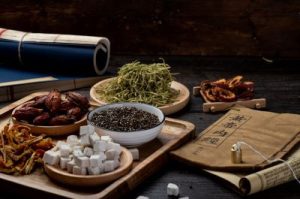 TCM likes to combine the Poria Cocos or the “Fu Ling” with medicinal herbs. In China, moreover, since the 1970s, there is also a traditional medicine made from the medicinal mushroom. The polysaccharides dissolved in it are said to support the treatment of various types of cancer, alleviate the symptoms of hepatitis B and promote the recovery process in a variety of other diseases.
TCM likes to combine the Poria Cocos or the “Fu Ling” with medicinal herbs. In China, moreover, since the 1970s, there is also a traditional medicine made from the medicinal mushroom. The polysaccharides dissolved in it are said to support the treatment of various types of cancer, alleviate the symptoms of hepatitis B and promote the recovery process in a variety of other diseases.
Occurrence in America
In itself, the Poria Cocos is not an edible mushroom worth mentioning. But Asians occasionally add it to their rice or flour as a neutral-tasting binder. Some indigenous tribes of North America have also collected the vital mushroom for food purposes and baked bread from its flour, for example. From this comes one of its English names, “Indian Bread”. Other names include Indian Potatoe and Tuckahoe, both referring to its underground growth. In the USA, the vital mushroom is primarily found in the wild in the Southeast.
Other names of the Poria Cocos
According to botanical nomenclature, the Poria Cocos is called “Wolfiporia extensa”. It belongs to the stem porling relatives. The term “Pachyma hoelen” is generally considered obsolete, but still occasionally appears in the literature. From its preferred location on the root or trunk of pines derives the German name “Kiefernschwamm”. The synonym “coccofungus”, on the other hand, comes from the round shape of the sclerotium with its rough, brown skin. The sclerotium is the mostly underground and fairly resistant permanent form of the fungus, from which the fruiting body grows under favorable weather conditions. This sclerotium contains a large number of substances that are beneficial to health.
What are the health-promoting ingredients of Poria Cocos?
In general, the sclerotium of the pine sponge is quite hard. This is very dense and tightly interwoven mycelium. The Poria Cocos is rich in fiber and in carbohydrates. It contains very little protein and almost no fat. Like all vital mushrooms, it also has a whole range of minerals, vitamins and trace elements such as zinc, copper and manganese. These alone can contribute to better health.
Furthermore, the Poria Cocos contains other, more specific substances to which scientists attribute various concrete effects in the body. These include first and foremost the beta-glucans Pachyman and Pachymaran. Beta-glucans belong to the polysaccharides, i.e. the polysaccharides. Another important group of substances is the triterpenes. These include poriatin, which has been shown to be partly responsible for the dehydrating effect of Poria coco. Other significant triterpenes from pine sponge include poric acid, pachymine acid, and polyporenic acid.
As a vital mushroom, Poria Cocos also has various diterpenes, sterols as well as choline. Within the sterols, ergosterol should be highlighted, which is a precursor of vitamin D2. This list of ingredients that have a positive impact on health is by no means complete. Since the pine sponge is not yet as intensively researched as, for example, the Reishi, we will probably only learn of some other valuable ingredients in the future. Nevertheless, there are already a good number of scientific studies that suggest various health effects from taking Poria Coco.
The areas of action of the Poria Cocos
Since the pine sponge has been used as a medicinal mushroom in TCM for a very long time, we would first like to present the view of this ancient Asian medicine on the medicinal mushroom. As you will see, some of the areas of effect have now also been confirmed in scientific studies. These include in particular the draining effect and the associated beneficial effect on the kidneys. But the vital mushroom has some other strengths, which we will now show you.
The view of TCM on the pine sponge
TCM healers have always associated the Poria Cocos with the organs of the kidney, spleen and heart. The reason for this is probably its diuretic properties, which means that it dehydrates the body. In the process, it exclusively discharges excess moisture. According to TCM, this otherwise becomes a viscous mucus, which stresses the body and thus leads to various symptoms. Over time, the mucus steadily thickens and eventually causes a so-called “stasis” of the bodily fluids. One consequence can be, for example, contamination and stagnation of the blood. In the Western world, the term “hyperacidity” is often used in this context.
Symptoms of excess moisture
- increased formation of mucus on the mucous membranes
- Cough, infections, fever
- Loss of appetite
- Feeling of pressure in the upper abdomen/feeling of fullness
- Fatigue especially after eating
- Lethargy /Inertia
- Diarrhea
- Gedunsenheit
- Dizziness and headaches
- Heart Clamps
- Lipomas
- Myomas
- Stones in kidney or gallbladder
- Thyroid nodule
- arteriosclerotic deposits
- Tumor formation
Diagnosis and causes of increased mucus
In TCM, the diagnosis of excess moisture is often made on the basis of the tongue. In this context, experts speak of a “Fuling tongue”, which is characterized by a thick tongue coating. In addition, the body of the tongue is swollen overall and tooth impressions can be seen on the sides.
The holistic view of TCM considers phlegm as both a material and an energetic deposit. That is why the causes can be in both areas. In the material area, an incorrect diet with too much sugar, many stimulants and dairy products, but also an excess of raw food is considered to be particularly conducive to the formation of mucus. A lack of exercise exacerbates the problem. Furthermore, conventional medical therapies that hinder the body’s own cleansing processes can be causative. On the energetic level, too much intellectual input stresses the spleen. This is because it is considered the organ responsible for processing external stimuli. This is how the memory-strengthening effect of this vital mushroom is explained.
The vital mushroom for the kidney
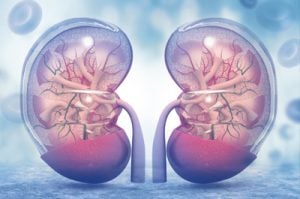 Poria Cocos exerts its dehydrating effect primarily through the kidneys. By supporting their function, it ensures a healthy regulation of the water balance. Unlike some other dehydrating substances, the vital mushroom does not cause excessive potassium excretion along with the water. Rather, it promotes a balanced sodium-potassium ratio in the organism. Scientists attribute its diuretic effect primarily to poriatin. It acts as an aldosterone antagonist and thus influences kidney function. Incidentally, the most poriatin is contained in the brown skin of the Poria coco. In Chinese it bears the name “Fu Ling Pi”. Overall, the pine sponge drains more gently than the vital mushroom Polyporus. That is why it is more likely to be used in high-risk patients.
Poria Cocos exerts its dehydrating effect primarily through the kidneys. By supporting their function, it ensures a healthy regulation of the water balance. Unlike some other dehydrating substances, the vital mushroom does not cause excessive potassium excretion along with the water. Rather, it promotes a balanced sodium-potassium ratio in the organism. Scientists attribute its diuretic effect primarily to poriatin. It acts as an aldosterone antagonist and thus influences kidney function. Incidentally, the most poriatin is contained in the brown skin of the Poria coco. In Chinese it bears the name “Fu Ling Pi”. Overall, the pine sponge drains more gently than the vital mushroom Polyporus. That is why it is more likely to be used in high-risk patients.
Due to its property of draining excess and accumulated fluids, the Poria Cocos promotes the reduction of edema. By stimulating the excretion of urine, the medicinal mushroom also helps with urinary retention, residual urine formation and dysuria.
The pine sponge not only promotes the work of the kidney. It also protects the all-important excretory organ in various ways. Thus, the poriatin contained in the vital mushroom reduces autoimmune processes such as those that occur in glomerulonephritis. In addition, poric acid protects the renal corpuscles through its anti-inflammatory properties. Finally, studies have shown effects indicating active protection of the kidneys by Poria coco against toxins.
Positive influence on stomach and intestines
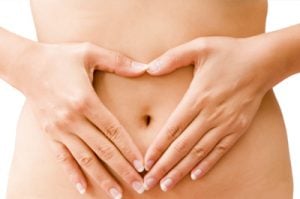 The medicinal mushroom Poria Cocos has proven to be a good digestive support in mycotherapeutic practice. Like other vital mushrooms, it promotes a healthy intestinal environment through its prebiotic properties. Similar to the vital mushroom Hericium, the pine sponge contains substances that are good for the intestinal epithelium and can alleviate inflammation that develops there. Due to these properties, the Poria Cocos supports the metabolic processes in the body.
The medicinal mushroom Poria Cocos has proven to be a good digestive support in mycotherapeutic practice. Like other vital mushrooms, it promotes a healthy intestinal environment through its prebiotic properties. Similar to the vital mushroom Hericium, the pine sponge contains substances that are good for the intestinal epithelium and can alleviate inflammation that develops there. Due to these properties, the Poria Cocos supports the metabolic processes in the body.
As a result of regular intake of Poria Cocos, especially the supply situation with micro- and macronutrients improves. The chair also becomes well-formed. If bloating after eating is a problem, the vital mushroom provides relief. Complaints such as loss of appetite or nausea may also decrease in the course of use.
Simply request free information brochures now!

After you have sent the completed form, you will receive an e-mail with a download link.
Poria Cocos for cancer
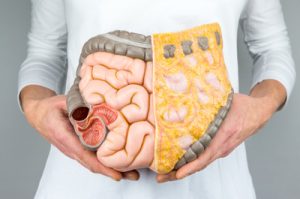 However, Poria cocos also seems to have some influence on tumors directly. Researchers were able to identify, for example, antitumor properties of the polysaccharides as well as the triterpenes of the medicinal mushroom. Especially with stomach and pancreatic cancer positive effects could be achieved by the supportive intake of the vital mushroom.
A detailed analysis of the effect of Poria coco on tumors showed four different levels of influence of the vital mushroom:
However, Poria cocos also seems to have some influence on tumors directly. Researchers were able to identify, for example, antitumor properties of the polysaccharides as well as the triterpenes of the medicinal mushroom. Especially with stomach and pancreatic cancer positive effects could be achieved by the supportive intake of the vital mushroom.
A detailed analysis of the effect of Poria coco on tumors showed four different levels of influence of the vital mushroom:
- The pine sponge inhibits tumor growth and induces cell death (apoptosis).
- The polysaccharides support the effect of chemotherapy while reducing its side effects.
- Body’s own defense mechanisms are promoted by the vital mushroom: Activation of macrophages, lymphocytes and natural killer cells.
- The antioxidant properties of the medicinal mushroom benefit both the prevention and treatment of cancer.
Poria Cocos for calming
From TCM comes one last area of application for the pine sponge. Thus, it is said to have a calming effect on the mind (“Shen”) as well as the heart. This is especially true of such restlessness that stems from spleen or kidney weakness. Possible symptoms here may include a general feeling of restlessness, nervousness, insomnia, anxiety, and palpitations.
Other possible areas of impact
- blood sugar lowering (insulin sensitizer)
- regulates fat metabolism (counteracts fat storage in liver cells)
- anti-osteoporotic
- immunomodulating
- Anti-Aging
- Hepatitis B alleviating
- anti hemorrhagic fever
- anti ALL (Acute Lymphoblastic Leukemia)
Where does the Poria Cocos grow?
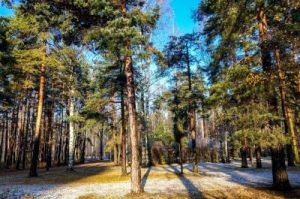 Finally, we would like to give a brief overview of the biological properties of Poria Coco. As mentioned at the beginning, the vital mushroom grows in the wild primarily in eastern China, but also in Japan, parts of Australia and the southeastern United States. In its native East Asia, it prefers Japanese red pine as a host tree. In other areas it is most commonly found under pines, but occasionally near other hardwoods.
The sclerotium of the fungus grows underground, similar to a potato. Due to its spherical shape and bark-like brown skin, the Poria Cocos is remotely reminiscent of a coconut. Its interior is hard and white. The usual diameter of the adult sclerotium is ten to twenty centimeters. Some specimens reach up to 35 centimeters.
Due to the dense mass, a weight of around 10 kilograms is quite possible for older specimens. Usually the sclerotium is dug out and processed between July and October. In some mycotherapeutic preparations, only the brown skin of the vital mushroom is found. However, the processing of the whole sclerotium is necessary for the comprehensive spectrum of action.
Finally, we would like to give a brief overview of the biological properties of Poria Coco. As mentioned at the beginning, the vital mushroom grows in the wild primarily in eastern China, but also in Japan, parts of Australia and the southeastern United States. In its native East Asia, it prefers Japanese red pine as a host tree. In other areas it is most commonly found under pines, but occasionally near other hardwoods.
The sclerotium of the fungus grows underground, similar to a potato. Due to its spherical shape and bark-like brown skin, the Poria Cocos is remotely reminiscent of a coconut. Its interior is hard and white. The usual diameter of the adult sclerotium is ten to twenty centimeters. Some specimens reach up to 35 centimeters.
Due to the dense mass, a weight of around 10 kilograms is quite possible for older specimens. Usually the sclerotium is dug out and processed between July and October. In some mycotherapeutic preparations, only the brown skin of the vital mushroom is found. However, the processing of the whole sclerotium is necessary for the comprehensive spectrum of action. What should I look for when buying Poria Cocos?
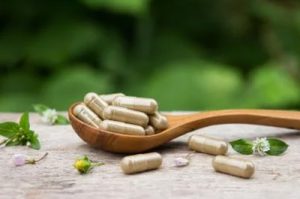 A practical as well as proven form of administration is the mushroom powder. Filled in capsules, it has a long shelf life and is easy to dose. Make sure that the powder comes from the whole mushroom. Only in this way can you be sure that all valuable ingredients are actually contained. After harvesting, the Poria Cocos should also have been gently dried, which excludes temperatures above 40 ° Celsius. Even during the grinding process, great care must be taken, as friction generates heat. Only sophisticated devices, for example with water cooling, can prevent this.
A practical as well as proven form of administration is the mushroom powder. Filled in capsules, it has a long shelf life and is easy to dose. Make sure that the powder comes from the whole mushroom. Only in this way can you be sure that all valuable ingredients are actually contained. After harvesting, the Poria Cocos should also have been gently dried, which excludes temperatures above 40 ° Celsius. Even during the grinding process, great care must be taken, as friction generates heat. Only sophisticated devices, for example with water cooling, can prevent this. How do I take the pine sponge?
For mushroom powders there are many suppliers
You will find trustworthy suppliers with controlled organic cultivation in Germany, but unfortunately also less recommendable importers of cheap goods. Read what is important when buying.
DO YOU HAVE ANY QUESTIONS?
We will gladly take time for you. In our free consultation, we answer all your health questions individually and personally. We are looking forward to meeting you!

Every person is unique!
Our experienced team will be happy to advise you in detail and free of charge on all matters relating to your health.
Scientific studies / sources
- Zhao YY, Feng YL, Du X, Xi ZH, Cheng XL, Wei F: Diuretic activity of the ethanol and aqueous extracts of the surface layer of Poria cocos in rat. J Ethnopharmacol. 2012 Dec 18;144(3):775-8. doi: 10.1016/j.jep.2012.09.033. Epub 2012 Oct 8.
- Wu ZL, Ren H, Lai WY, Lin S, Jiang RY, Ye TC, Shen QB, Zeng QC, Xu DLSclederma of Poria cocos exerts its diuretic effect via suppression of renal aquaporin-2 expression in rats with chronic heart failure. J Ethnopharmacol. 2014 Aug 8;155(1):563-71. doi: 10.1016/j.jep.2014.05.054. Epub 2014 Jun 13.
- Cheng S, Eliaz I, Lin J, Thyagarajan-Sahu A, Sliva DTriterpenes from Poria cocos suppress growth and invasiveness of pancreatic cancer cells through the downregulation of MMP-7. Int J Oncol. 2013 Jun;42(6):1869-74. doi: 10.3892/ijo.2013.1902. Epub 2013 Apr 16.
- SeulahLee, EunyongChoi,Su-ManYang, RhimRyoo, EunjungMoon, Seon-HeeKim,Ki HyunKim: Bioactive compounds from sclerotia extract of Poria cocos that control adipocyte and osteoblast differentiation. Bioorganic Chemistry Volume 81, December 2018, Pages 27-34
- NaWang, Dengxiang, LiuJun, GuoYawei, SunTing, GuoXiaoyan, Zhu: Molecular mechanism of Poria cocos on the inhibition of epithelial-mesenchymal transition in gastric cancer cells. Biomedicine & Pharmacotherapy Volume 102, June 2018, Pages 865-873.
- WuxiaZhang, LuChen, PengLi, JinzhongZhao, JinyouDuan: Antidepressant and immunosuppressive activities of two polysaccharides from Poria cocos (Schw.) Wolf. International Journal of Biological Macromolecules Volume 120, Part B, December 2018, Pages 1696-1704 B
